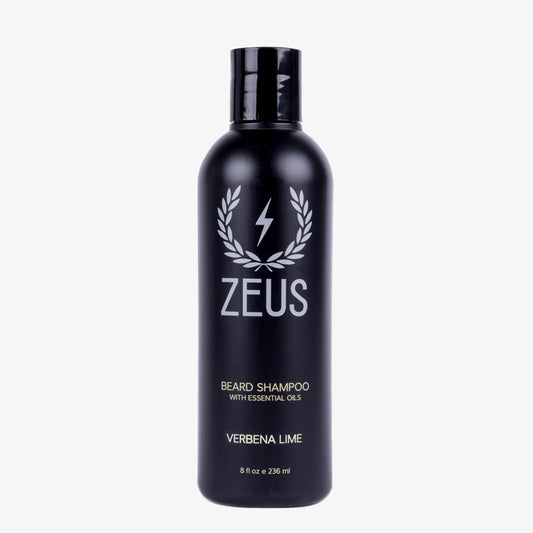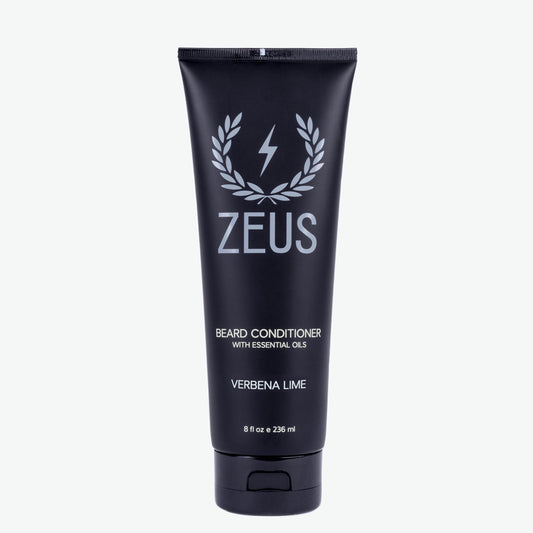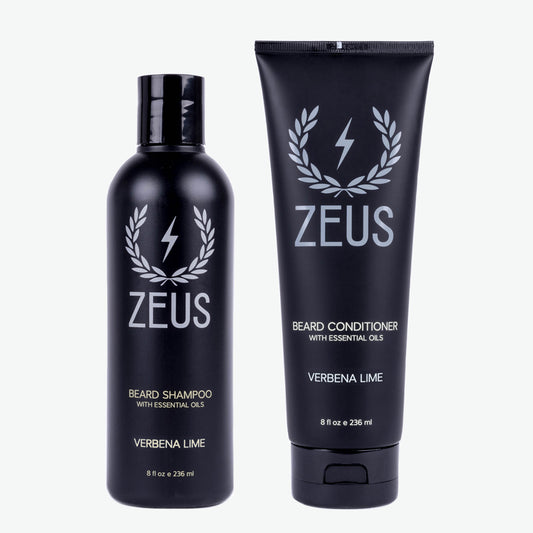Welcome to the ultimate guide to conquering a common foe of every proud beard owner: beardruff! You know, those pesky white flakes that can ruin the majestic look of your facial fuzz.
So, what exactly is beardruff? Beardruff, or beard dandruff, is the flaky, dry skin that can occur underneath your beard. It's like the snowfall you never asked for, but on your face! But don't worry, it's a common issue faced by many bearded men, and there are ways to tackle it head-on.
Maintaining a healthy beard isn't just about looking good; it's also about keeping your skin happy and comfortable. After all, your beard is only as good as the skin it grows on! Neglecting beard care can lead to not just beardruff but also other skin issues like itching, irritation, and even beard acne. Yikes!
But fret not, dear readers, because in this article, we've got your back (and your beard)! We'll be sharing expert tips and strategies straight from the grooming gurus to help you prevent and avoid beardruff like a pro.
It's worth noting that beard dandruff can sometimes be a sign of seborrheic dermatitis, as mentioned by Dr. Benjamin Ungar from the Rosacea & Seborrheic Dermatitis Clinic at Mount Sinai in New York. He describes beard dandruff as "a less inflammatory form of seborrheic dermatitis where the primary manifestation is flaking, with less prominent redness and itching." So, it's crucial to stay vigilant and care for your beard and skin regularly.
So without further ado, get ready to bid farewell to those unwanted snowflakes and say hello to a healthy, flake-free beard! Let's dive into the wonderful world of beard care and reclaim your beard's glory.
Understanding Beardruff
Ah, the mysterious world of beardruff - where tiny flakes can cause big annoyances. Let's shed some light on what actually causes this pesky problem and how you can identify it.
What causes beardruff?
Dry skin: Just like the skin on your scalp can get dry and flaky, the skin under your beard can suffer the same fate. Lack of moisture and harsh weather conditions can strip your skin of its natural oils, leading to dryness and flaking.
Fungal infections: Yes, you read that right. Fungi like Malassezia can make themselves at home on your skin, especially in warm and moist environments (hello, beard!). This can trigger irritation and flaking, resembling the infamous beardruff.
Poor hygiene: Skipping regular beard washes and neglecting proper grooming habits can create a breeding ground for bacteria and yeast, contributing to beardruff woes.
Harsh products: Using harsh shampoos, soaps, or styling products not designed for beards can disrupt the natural balance of your skin and hair, leading to dryness, itchiness, and—you guessed it—beardruff.
Symptoms of beardruff

Itching: Ah, the telltale sign that something's amiss beneath your beard. Persistent itching can indicate dryness, irritation, or even fungal issues, prompting you to take action.

Flaking: The classic indicator of beardruff! Those tiny, white flakes appearing on your beard and shirt collar are hard to miss and can be a source of embarrassment.

Redness and irritation: Along with itching and flaking, you might notice redness and irritation on the skin under your beard. This can be uncomfortable and may signal underlying skin issues that need attention.
Understanding the causes and symptoms of beardruff is the first step toward reclaiming a healthy, flake-free beard. But fear not, dear readers, for we're diving deeper into actionable tips and strategies to combat beardruff and keep your beard game strong!
Proper Beard Care Routine
Maintaining a healthy beard and skin requires a consistent and effective care routine. Here are some essential steps to keep your beard free from dandruff and looking its best:

- Washing your beard correctly: Use a beard-specific shampoo and conditioner to cleanse your beard and moisturize the skin underneath. Avoid over-washing, as it can strip away natural oils, leading to dryness and flaking. Aim to wash your beard 2-3 times a week, adjusting as needed based on your lifestyle and beard type.

- Hydrating and moisturizing: After washing, apply a beard oil or balm to hydrate your beard and nourish the skin. Look for products with natural ingredients like jojoba oil, argan oil, or shea butter, which can help soothe dryness and promote healthy hair growth.

- Brushing and combing: Invest in a quality beard brush or comb to detangle your beard and distribute oils evenly. Brushing stimulates blood flow to the hair follicles and helps exfoliate dead skin cells, reducing the risk of beardruff.
By incorporating these simple yet effective steps into your beard care routine, you can prevent beardruff and enjoy a softer, healthier beard that's sure to turn heads. Stay tuned for more tips on maintaining a beard that's as impressive as it is flake-free!
Food and Beard Health: What's the Link?
Your diet doesn't just affect your waistline; it can also impact the health of your beard and skin. While direct evidence linking specific foods to beardruff is still evolving, certain dietary adjustments may benefit your beard's overall health.

- Limit Sugar: Reducing sugar intake can help manage inflammation, potentially reducing beardruff. Sugars and simple carbs can trigger inflammation in the body, exacerbating skin issues. Opt for a low-sugar, antioxidant-rich diet to support skin health.

- Eat More Fruits and Vegetables: A diet rich in fruits and vegetables provides essential nutrients and fiber vital for skin health. Improved digestion from these foods can indirectly benefit your beard by reducing potential skin issues.

- Yeast Connection: Some believe yeast in the diet could worsen dandruff. While not proven, cutting back on yeast-containing foods like beer and bread might help some individuals.

- Include Healthy Fats: Omega-3 fatty acids found in fish and healthy oils have anti-inflammatory properties that benefit skin health. Though not studied specifically for beardruff, they promote overall skin well-being.

- Choose Biotin and Zinc: These nutrients support healthy skin and hair. Foods like eggs, yogurt, and nuts are rich in biotin and zinc, contributing to a healthy beard environment.
While dietary changes won't magically cure beardruff, they complement external care efforts. Consult with a nutrition expert for personalized dietary advice tailored to your beard's needs. Integrating these food choices can enhance your beard's resilience against flaking, ensuring a healthier and more vibrant facial mane.
Avoiding Common Mistakes
Maintaining a healthy beard isn't just about what you do—it's also about what you avoid. Here are common mistakes to steer clear of:
- Effects of stripping natural oils: Overwashing can strip your beard of its natural oils, leading to dryness and increased beardruff. Find a balance by washing your beard 2-3 times a week.
- Choosing gentle and beard-friendly products: Opt for beard shampoos and conditioners specifically formulated to cleanse without harsh chemicals. Look for natural ingredients like argan oil or tea tree oil for added benefits.
- Importance of keeping beard hairs neat and tidy: Regular trimming prevents split ends and keeps your beard looking sharp. Consider visiting a professional barber for precise trimming based on your beard style and length.
- Trimming tips: Use quality scissors or trimmers and comb through your beard before trimming. Trim along the natural beard shape and adjust length gradually for a polished look.
Dealing with Beardruff Flare-ups
Despite your best efforts, beardruff flare-ups can still occur. Don't panic! Here's how to tackle them effectively:
- Using anti-dandruff products sparingly: Choose gentle anti-dandruff shampoos or treatments containing ingredients like zinc pyrithione or ketoconazole. Apply them sparingly to avoid drying out your skin.
- Natural remedies: Turn to soothing natural ingredients like aloe vera gel or tea tree oil. These have anti-inflammatory and antimicrobial properties that can calm itching and reduce redness.
- Consulting a dermatologist: If beardruff persists despite your efforts, it may be time to seek professional help. A dermatologist can assess your condition and recommend personalized treatments, such as prescription-strength shampoos or topical creams.
- Understanding when to switch products or routines: Your beard care routine may need adjustments over time. If certain products or habits seem to worsen beardruff, don't hesitate to make changes. Experiment with different products and techniques until you find what works best for your beard and skin.
Embrace Your Flawless Beard
Congratulations on completing your crash course in beard care! By understanding the causes of beardruff, adopting a proper grooming routine, making healthy lifestyle choices, and knowing how to tackle flare-ups, you're well-equipped to rock a healthy and flake-free beard. Remember, consistency is key, so stick to your new habits and watch your beard flourish. Here's to a beard that's as impressive as you are!








